Paintings : 7
-
![La Ménagerie impériale, composée des ruminants, amphibies, carnivores et autres budgétivores qui ont dévoré la France pendant 20 ans [the Imperial Menagerie, featuring ruminants, amphibians, carnivores, and other state-funding-ivores who have been devouring France for the last 20 years]](https://www.napoleon.org/wp-content/thumbnails/uploads/2020/02/900menagerie-couv-tt-width-150-height-150-crop-1-bgcolor-ffffff-lazyload-0.jpg) PaintingLa Ménagerie impériale, composée des ruminants, amphibies, carnivores et autres budgétivores qui ont dévoré la France pendant 20 ans [the Imperial Menagerie, featuring ruminants, amphibians, carnivores, and other state-funding-ivores who have been devouring France for the last 20 years]
PaintingLa Ménagerie impériale, composée des ruminants, amphibies, carnivores et autres budgétivores qui ont dévoré la France pendant 20 ans [the Imperial Menagerie, featuring ruminants, amphibians, carnivores, and other state-funding-ivores who have been devouring France for the last 20 years]The Second Empire, it is true, was built upon the idea of the First, but the liberalisation of the Second (from 1861 on) was not a step that the uncle ever took; at least not until the extraordinary Hundred Days, and even then only half-heartedly. As a result, the political caricatures that assailed Napoleon I […]
-
![Orsini’s attack [on Napoleon III] outside the Opera, 14 January 1858](https://www.napoleon.org/wp-content/thumbnails/uploads/2020/01/attentat_orsini-tt-width-150-height-150-crop-1-bgcolor-ffffff-lazyload-0.jpg) PaintingOrsini’s attack [on Napoleon III] outside the Opera, 14 January 1858
PaintingOrsini’s attack [on Napoleon III] outside the Opera, 14 January 1858This painting depicts the attack carried out by the Italian revolutionary Felice Orsini against Napoleon III, and is the work of the little-known Italian painter H. Vittori. It is signed and dated “H. Vittori Romano 1862”. In the top left-hand quarter of the painting we can see part of the façade of Paris Opera which […]
-
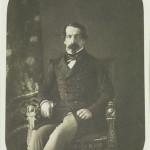 PaintingPhotograph of Prince-President Louis-Napoleon Bonaparte
PaintingPhotograph of Prince-President Louis-Napoleon BonaparteOn 11 December 1848, Louis-Napoleon Bonaparte was elected (the first, and only) President of the Second Republic, by universal male suffrage. It was from the Elysée-National (the Elysée Palace, chosen by the Assembly to be the official residence of the President of the Republic) that the future Emperor prepared the coup d’etat of 2 December […]
-
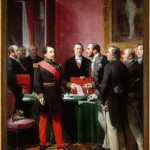 PaintingNapoleon III Hands Baron Haussmann the Decree Annexing the Parisian Suburban Communes
PaintingNapoleon III Hands Baron Haussmann the Decree Annexing the Parisian Suburban CommunesAdolphe Yvon was principally a painter of battle scenes and a student of Paul Delaroche. His works include Marshal Ney Supporting the Rear Guard during the Retreat from Moscow (1856, Manchester Art Gallery), the Taking of the Malakoff tower by General Mac-Mahon, 8 September, 1855 (salon of 1857, Château de Versailles et de Trianon), The […]
-
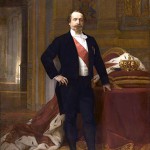 PaintingPortrait of Napoleon III
PaintingPortrait of Napoleon IIIOriginally from Montpellier, Alexandre Cabanel’s career was without blemish, beginning, in the most classic of fashions, with a schooling according to the 19th century academic curriculum. This was followed by the Prix de Rome in 1845 and medals at the Salon of 1853 and the Universal Exhibition of 1855. That same year, he was made […]
-
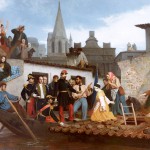 PaintingThe emperor visiting the flood victims in Tarascon (June 1856)
PaintingThe emperor visiting the flood victims in Tarascon (June 1856)Fro, the ancients on, history painting was considered art’s noblest genre. And this opinion held good through the Renaissance right up to the end of the Second Empire. It had become the type of art that we would nowadays call ‘documentary’, though the scenes were often carefully staged. The public demanded modern subjects, often from current affairs, almost newspaper snapshots. […]
-
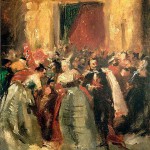 PaintingCostume Ball at the Tuileries Palace
PaintingCostume Ball at the Tuileries Palace1867. More than 7 million visitors came to see the Exposition universelle, and for the occasion Paris glittered like a diamond tiara. The sovereigns and elite of the whole world flocked to the festivities organised by the imperial regime. The celebrations were incessant. The journalist Henri Rochefort noted with irony that: «Paris, which people have […]

